What’s Fueling Austin’s Edgy Modern Architecture?
http://decor-ideas.org 02/02/2014 23:22 Decor Ideas
Why does progressive architecture bubble up in one city and fizzle in another? What factors produce interesting, forward-thinking modern homes?
One of-the-moment city from which we can pluck a formula to follow is Austin, Texas, a city I once called home. Whether you agree on the aesthetic and quality of the residential architecture coming out of the Lone Star State capital or not, a lot can be learned from the seemingly perfect storm of factors that have come together to foster a blossoming design scene there.
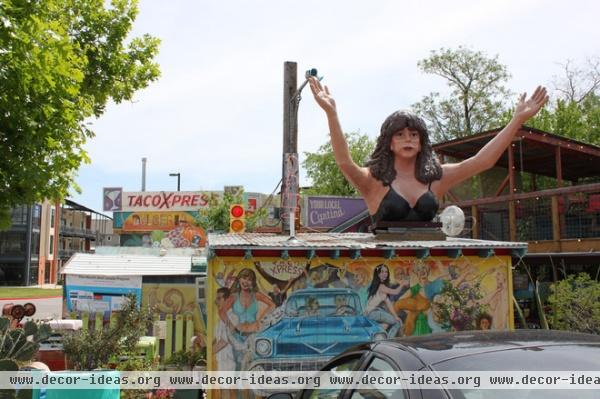
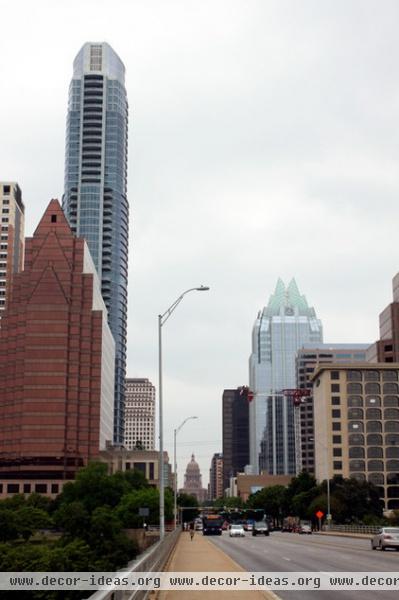
Keep Austin Weird
There isn’t a specific set of characteristics that defines a modern Austin home. In fact, the architecture has many elements found in other cities: a deep connection between the indoors and out, and lots of sustainable, reclaimed materials.
But what’s unique in Austin, apart from the strong economy, is something intangible: a very distinct cultural identity. For example, the local live music scene penetrates everything in the city, adding an energy to everything you see, smell, touch, taste and feel.
Austin’s mind-set favors free expression and support of local businesses, and above all the city doesn’t take itself too seriously. It’s got that whole ’60s counterculture vibe like you’ll find in San Francisco, where people are allowed — and highly encouraged — to be weird. Keep Austin Weird is even a website.
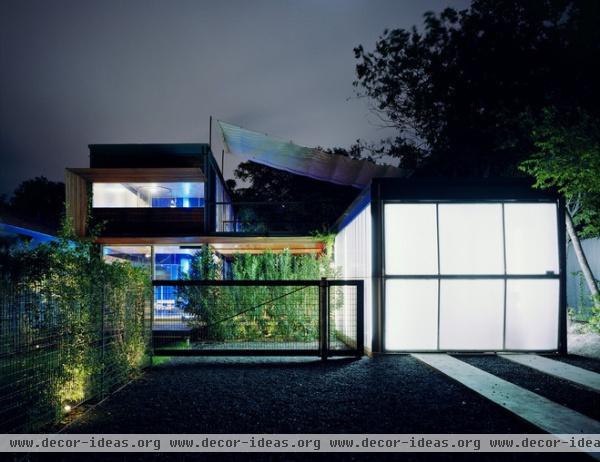
This outlook means that many Austin homeowners are more open to experimental things, and architects have opportunities to actually build progressive designs that other cities’ residents might balk at.
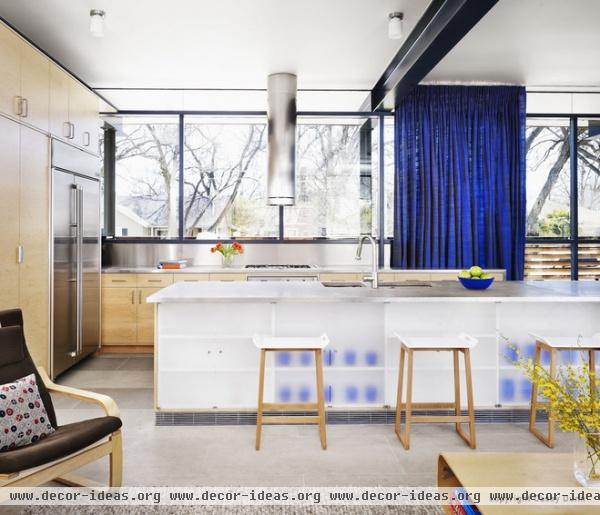
“There’s not one dominant culture of people,” architect Hugh Jefferson Randolph says. “There’s politics, high tech, oil, ranching, university professors, state government — everyone here loves to be different. They almost try too hard to be unique.”
This overachieving ambition to be current and hip is what pushes the style to the edge, while the city’s casualness, its laid-back demeanor, keeps it from being too slick.
Part of that demeanor comes from Austin’s early relationship with the green building movement. The city was the first with a green building program, and the Center for Maximum Potential Building Systems has been a major player in the green movement since its inception in the 1970s.
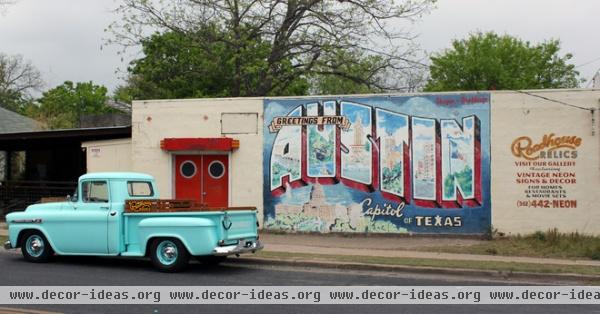
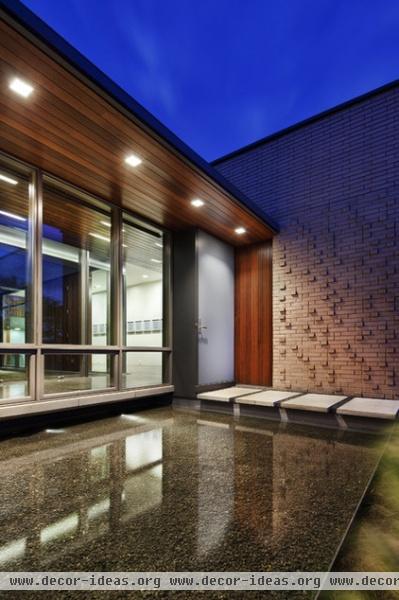
A Top-Ranked Urban University
Austin is home to the University of Texas, with an architecture school that’s consistently ranked in the Top 10 for both its undergraduate and graduate programs. (It was named the No. 4 undergraduate school of architecture in 2013 by DesignIntelligence.) This means that there’s a lot of talent being grown at home. And because Austin is a fun, desirable place to live — lots of bars, restaurants, fairly inexpensive rent etc. — that talent tends to stick around after graduation. So there’s always a fresh new crop of architects adding to the scene.
What’s more, while other schools might focus on digital fabrication, UT produces architects who actually build things. “Its program is focused on building builders,” says Kevin Alter, an architect, professor and associate dean for graduate programs at the UT School of Architecture. “People go to the school because they want to actually make buildings. So when they get out, they’re eager to design and build.”
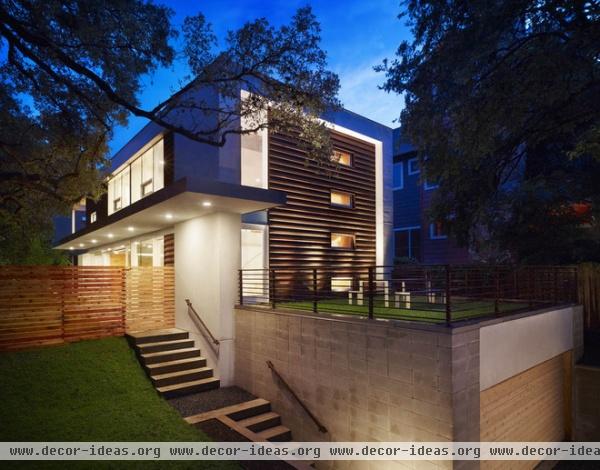
It’s not just the newbies coming out of the architecture school making a difference. The university has been producing talented architects for decades, and many of them have stuck around to teach or open their own firms.
“It was sort of dumb luck,” says architect David Webber. “L.A. was that way decades ago, on the leading edge of recent modern movement. Seattle was strong. Austin has that winning streak.”
Among the talented crew that laid the groundwork are Kevin Alter, Burton Baldridge, Michael Hsu, Chris Krager, Cornerstrone Group, Heather McKinney, Emily Little, Gary Furman, Dick Clark and Thomas Bercy. “They are all part of what ushered us in,” says Webber. “Our young interns are so much better than when we were interns. And we’re going to get our lunches eaten by the next wave. Which is totally how it should work.”
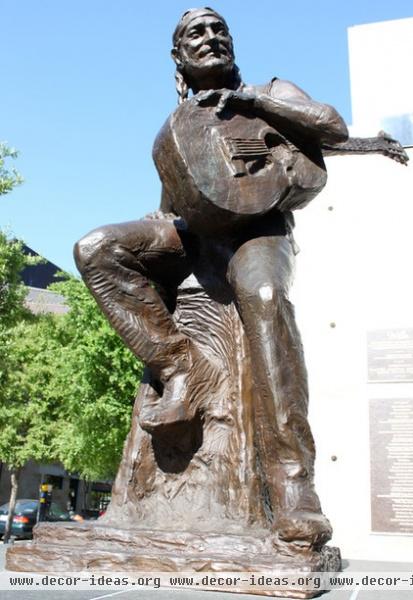
The Creative Class
Part of the whole Keep Austin Weird mentality attracts and fosters what American urban studies theorist Richard Florida calls the creative class, a subset of the population who work in creative fields such as the arts, engineering, media and design. Cities with strong creative classes, his research has shown, have stronger economic futures.
Steven Perdigo works as the director of research for Richard Florida’s Creative Class Group. He hasn’t looked at types of architecture, but he has studied effects of communities with high numbers of creative people. For regions that have high concentrations of those types of occupations, the “economy seems to be growing fast,” he says. And a growing economy means more wealth and opportunity to invest in homes.
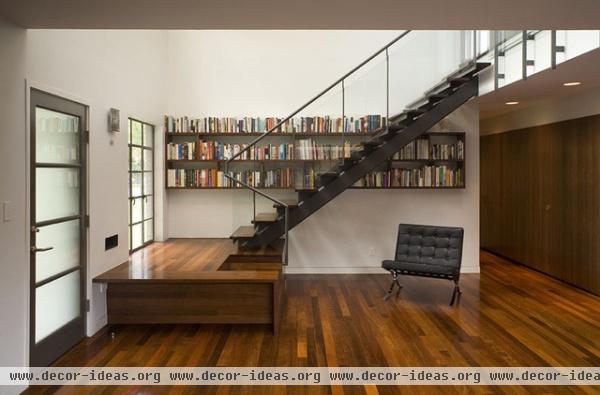
Austin has succeeded in attracting and developing a creative class by priding itself on staying open-minded, Perdigo says. The city has a higher tolerance for gay and foreign-born people, another factor that correlates with creative classes and stronger cities. And Perdigo points to Austin’s urban university for acting as “a petri dish to help maintain tolerance of such diversity, which attracts more diverse backgrounds,” he says.
Webber agrees. “The U.S. has an interesting history of darling, creative-class cities. Austin has been on the edge of being on that list for the last two decades — Las Vegas and Phoenix were on it. Now it seems to be Austin’s decade,” he says.
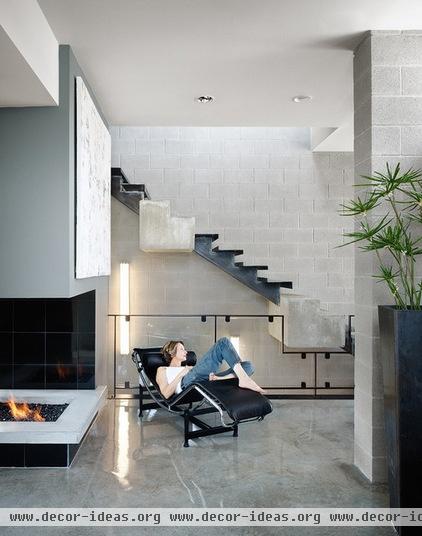
The Housing Stock
Housing stock refers to the homes that have already been built and are available on the market. Many have been around almost since a city’s beginning, and have gone on to influence and set a regional vernacular.
Places like Georgetown in Washington, D.C., have historic appeal and are well built. In cities like that, new residents moving into old homes usually remodel the housing stock that’s already available, rather than tear down and build something new and modern. In other words, there’s not a lot of opportunity for a modern architect to play around with creating new homes.
In Austin, though, it’s the opposite. The housing stock has never been desirable. “Most of the historic stuff was essentially shacks,” Webber says. There are plenty of older neighborhoods in Austin with a lot of charm, but many of the homes just weren’t built very well. “Many are just not that good and not worth saving,” says Randolph.
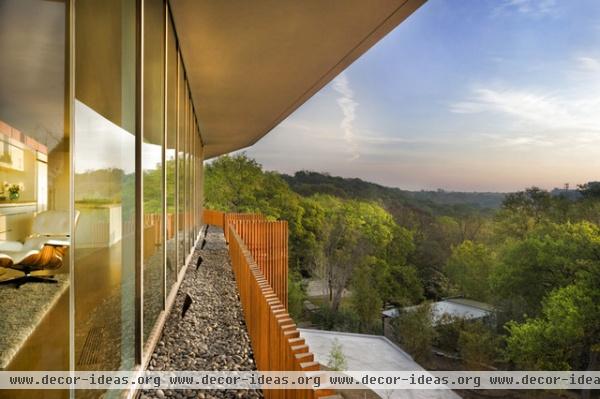
So many new residents coming from the East Coast or West Coast look at the cheap paint and windows and immediately deem the homes unacceptable. That means there’s more incentive to tear down and build new, and less trepidation about it. “Half or 60 percent of new houses in the last 10 years have been where old houses were,” Randolph says.
What’s also interesting is that many neighborhoods that have a suburban feel are really close to the downtown core, so residents can live in a nice little 1940s house that’s walking or biking distance to restaurants, bars, Lady Bird Lake etc. “In bigger cities you’d have to drive far to get that lifestyle,” Randolph says.
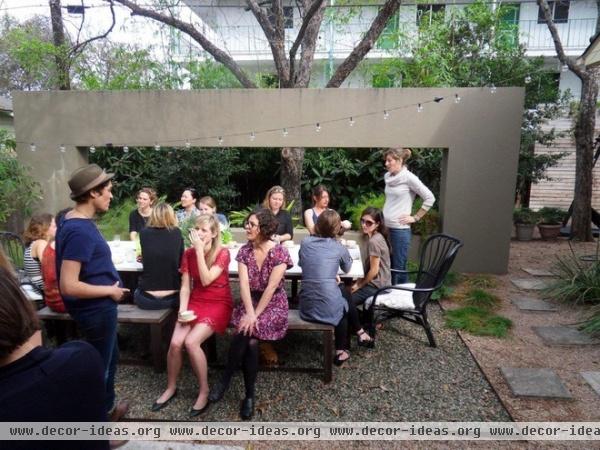
Climate
It’s hotter than hell sometimes in Austin. The last summer I lived there, we had triple-digit temperatures for more than 90 days in a row. It’s scorching. But most of the time, the weather is rather moderate.
Alter puts it this way: The difference between the inside and outside air in Austin will never be very drastic, maybe 35 degrees at the most, in summer and winter. In places like Canada, though, which reach temperatures of 20 degrees below zero, the difference is 90 degrees from the inside to outside, and designers have to plan accordingly.
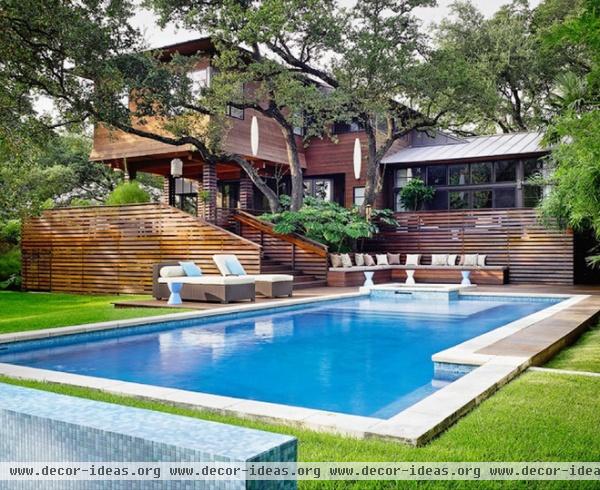
Couple Austin’s moderate temperature changes with the fact that there aren’t snow loads or earthquakes to deal with, and its modern design becomes a little more delicate and a little easier to execute in interesting ways. This helps free architects to experiment organically.
“August is awful, but with shade and a breeze you can be outside,” Alter says. “It’s a benign climate that allows for modern vernacular that works really well — big overhangs for spatial reasons, more seamless feel between indoors and out; it works excessively well in our climate. And because you want to get light in, in every possible way, you can play with light and shade.”
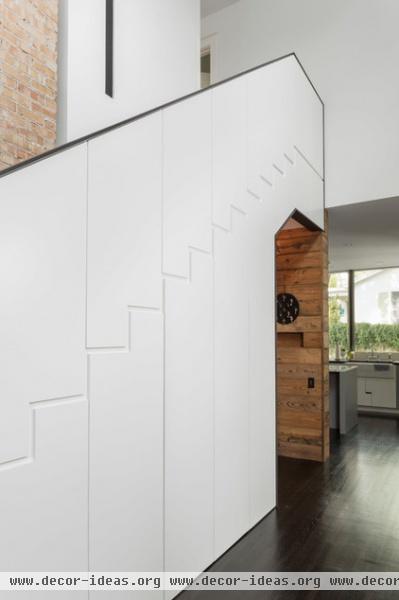
The Young Techies
With the university spewing out smart young people, and more migrating from other states who are attracted to the economy, Austin’s youth are in a strong position to influence the local residential architecture. And the growing tech sector is adding fuel to the fire.
It’s a relatively new notion that’s creeping into Austin. While there’s always been somewhat of a strong tech presence — Dell is headquartered up the road in Round Rock — not only are new Internet companies calling the city their own (HomeAway and Retail Me Not, for example), but a large number of expats from the San Francisco Bay Area are moving to Austin and working in Facebook or Apple offices, or are starting their own tech companies. “These ambitious, youthful businesses are popping up, and they’re coming from one of the most expensive regions on the planet to a relatively cheap area,” Alter says. “The people are progressive, smart, young and are used to paying out the nose for rent, let alone building a home.”
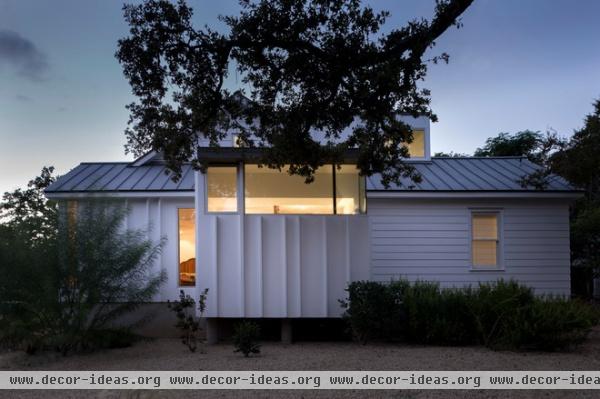
After living in large, expensive cities where they encounter great design every day, they’re moving to Austin and bringing that knowledge with them, and they’re more likely to take a chance. “The people moving here are not coming from the Deep South looking for the same types of houses,” Alter says. “They’re moving from real cities, more sophisticated places. Much of California moves here because they see the cost of Austin and how cool it is. They bring things they know about. Companies relocated here because it’s a good deal. It’s not something homegrown.”
It’s doubtful, though, that the rush will continue for much longer. “With 150 people moving to the city every day and property values steadily rising, prices are starting to tick up to that $1.2 million mark for a 2,500-square-foot house,” Alter says. Once that happens, everyone will start looking around for a new place to call home.
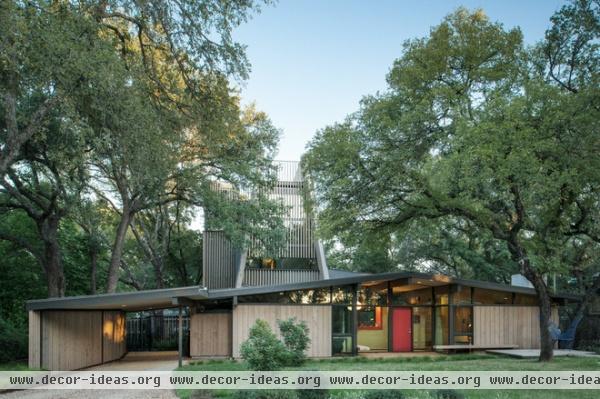
A Long Way to Go
While Austin is definitely a city where a lot of new building is happening, not everyone is quick to shower the designs with praise. Alter himself doesn’t exactly gush at all the designs happening in his city. “Austin is late to this game,” he says. “Compared to where it was, it’s awesome. Compared to a real city, it’s just OK.”
He doesn’t think Austin’s experimentation with architecture is on par with places like New York, Los Angeles or San Francisco, but he does see promise. “It’s exciting,” he says. “Do I wish it was more sophisticated? Sure. We don’t have a major art museum in town; we’re still lagging behind other cities.”
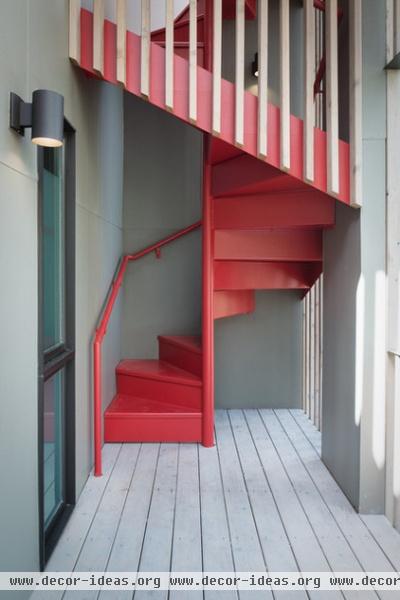
Webber agrees with Alter. He says Vancouver, Seattle, Arizona, Iowa and Nebraska have all been more progressive in terms of its own vernacular design than Austin, which he says has to appease mainstream tastes more than it’d like to admit. “The design coming out of Austin is out there enough for the average Joe, but it’s not so far out there to be alienating,” he says. “We think design should be more adventurous.”
Perhaps then what’s fueling the excitement surrounding the city of Austin is partly the excitement itself. But maybe that’s a good thing. “Hype has made it better,” Alter says.
Events: Modern Home Tour Austin (held at the beginning of February); Barkitecture (October 19, 2014); AIA Austin’s 28th Annual Home Tour (date TBD)
Travel Guide: Places to go and things to do in Austin
More: Explore more of Austin’s modern architectural style
Related Articles Recommended












